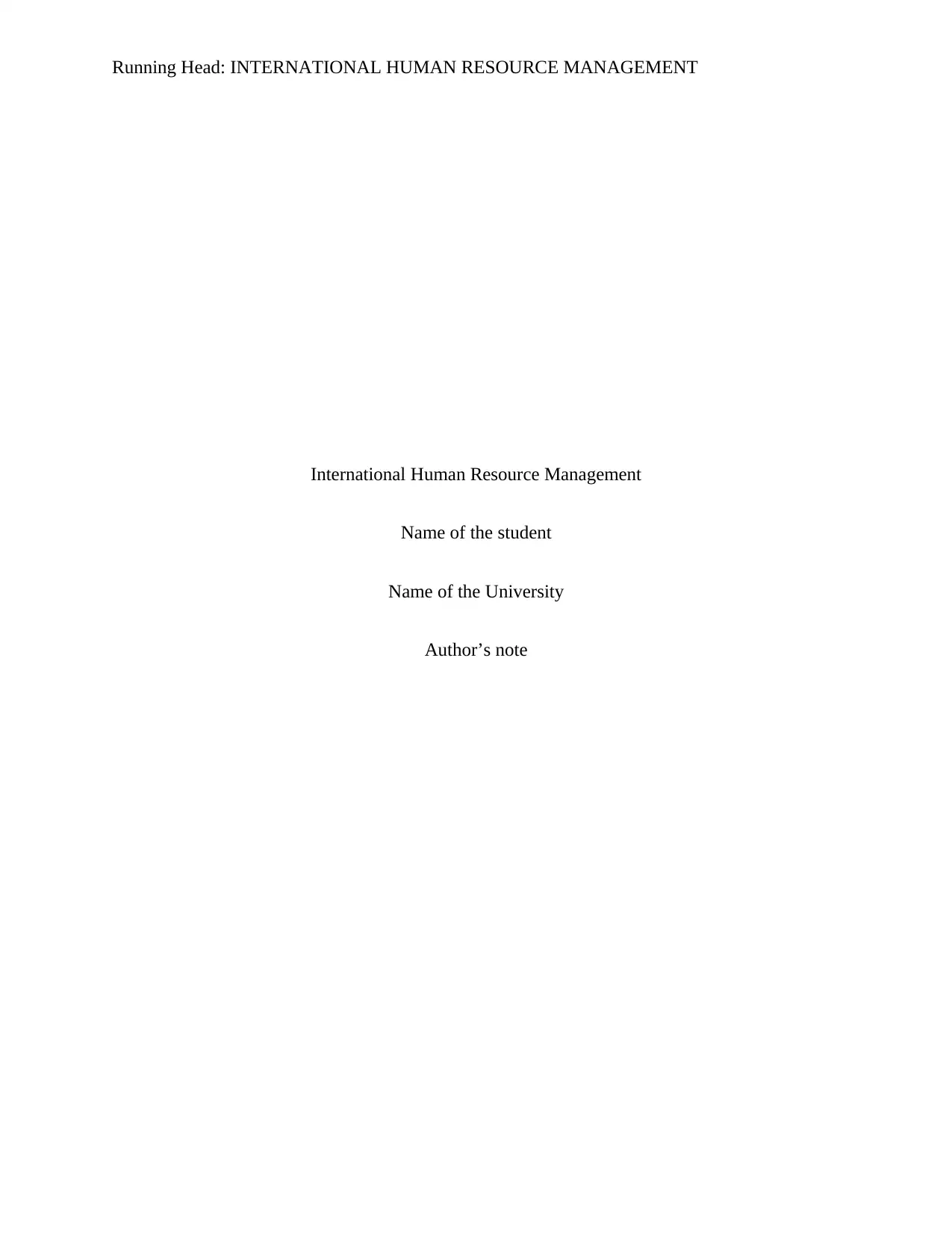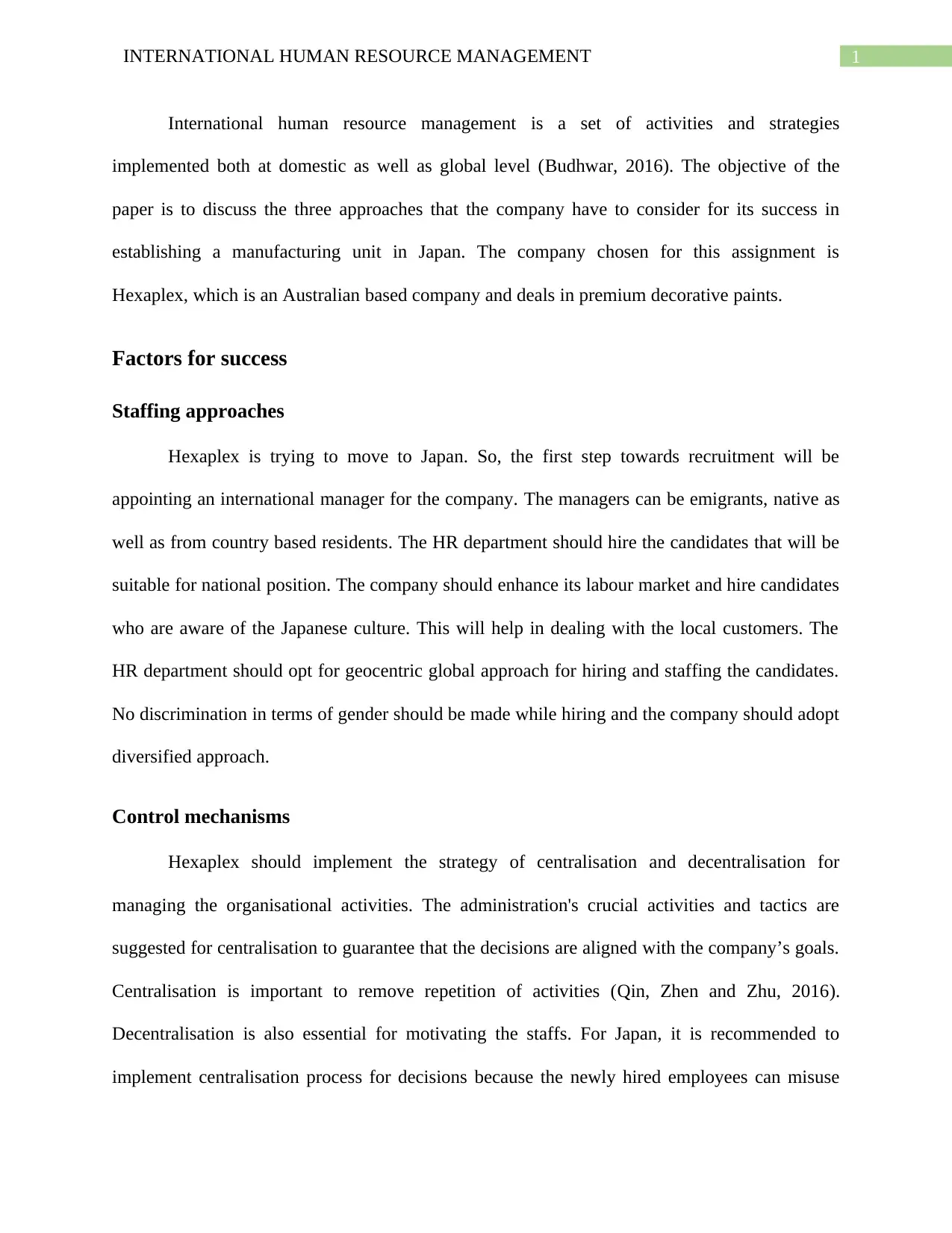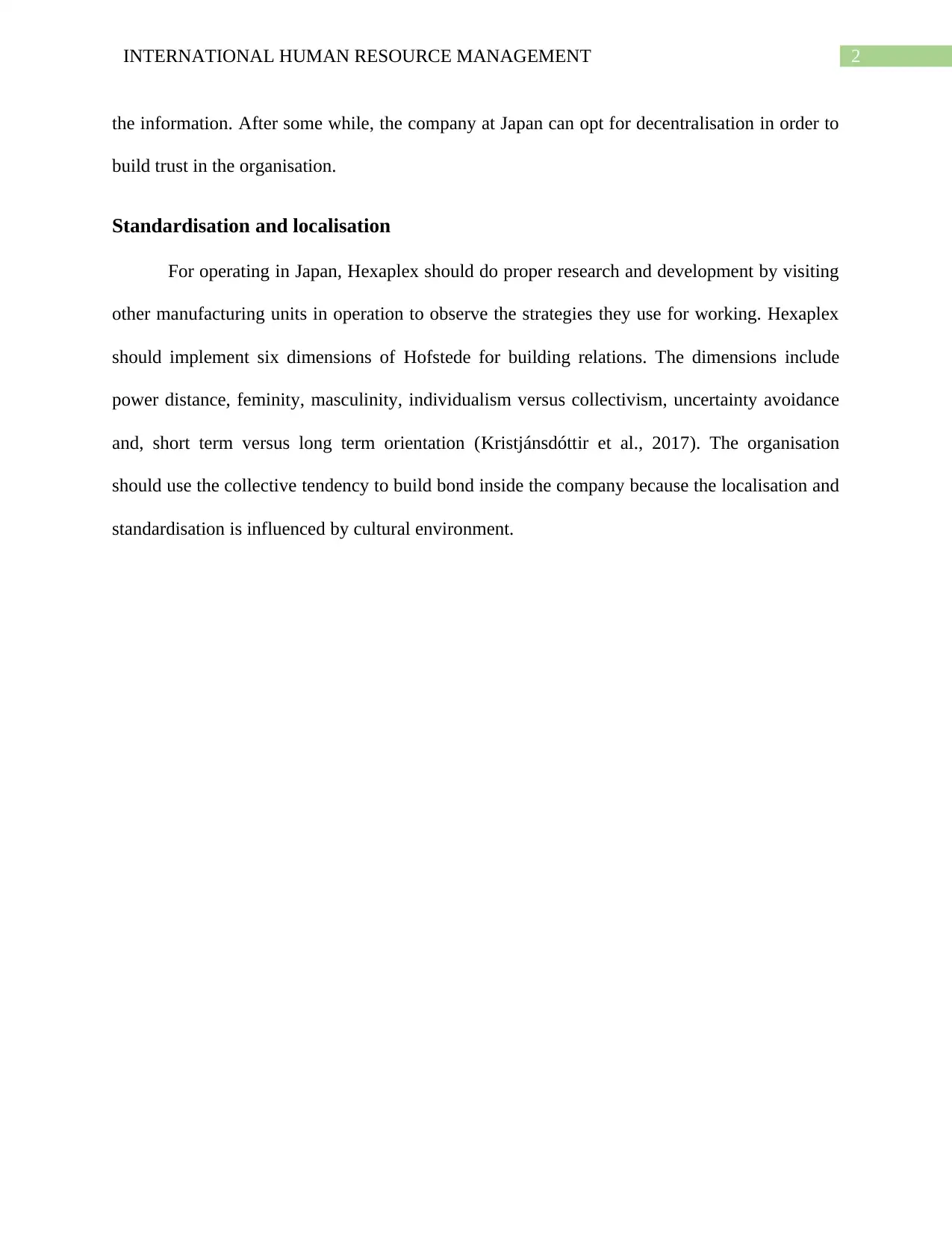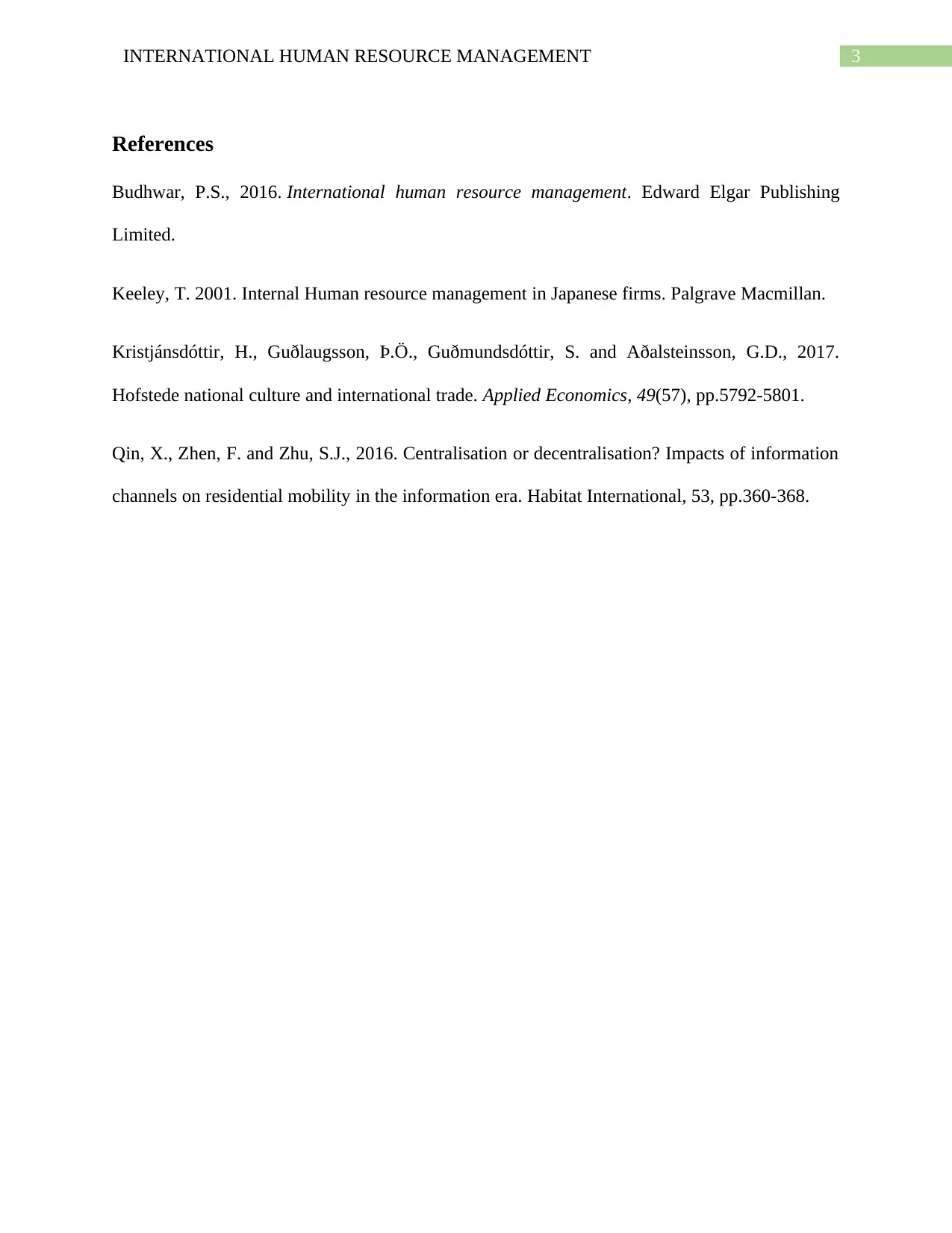International HRM: Hexaplex Manufacturing Unit in Japan Analysis
VerifiedAdded on 2022/07/29
|4
|546
|25
Report
AI Summary
This report analyzes the International Human Resource Management (IHRM) strategies that Hexaplex, an Australian-based premium decorative paints manufacturer, should adopt for the successful establishment of a manufacturing plant and operational unit in Japan. The report addresses three key factors: staffing approaches, control mechanisms, and standardization and localization. For staffing, it recommends a geocentric approach, emphasizing the recruitment of candidates familiar with Japanese culture and the adoption of a diversified hiring process. Regarding control mechanisms, the report suggests a centralized approach initially, followed by decentralization to build trust. Finally, it emphasizes the importance of research and development, including benchmarking against existing Japanese manufacturing units, and the application of Hofstede's cultural dimensions to foster relationships within the company, balancing standardization and localization to align with the Japanese cultural environment.
1 out of 4








![[object Object]](/_next/static/media/star-bottom.7253800d.svg)